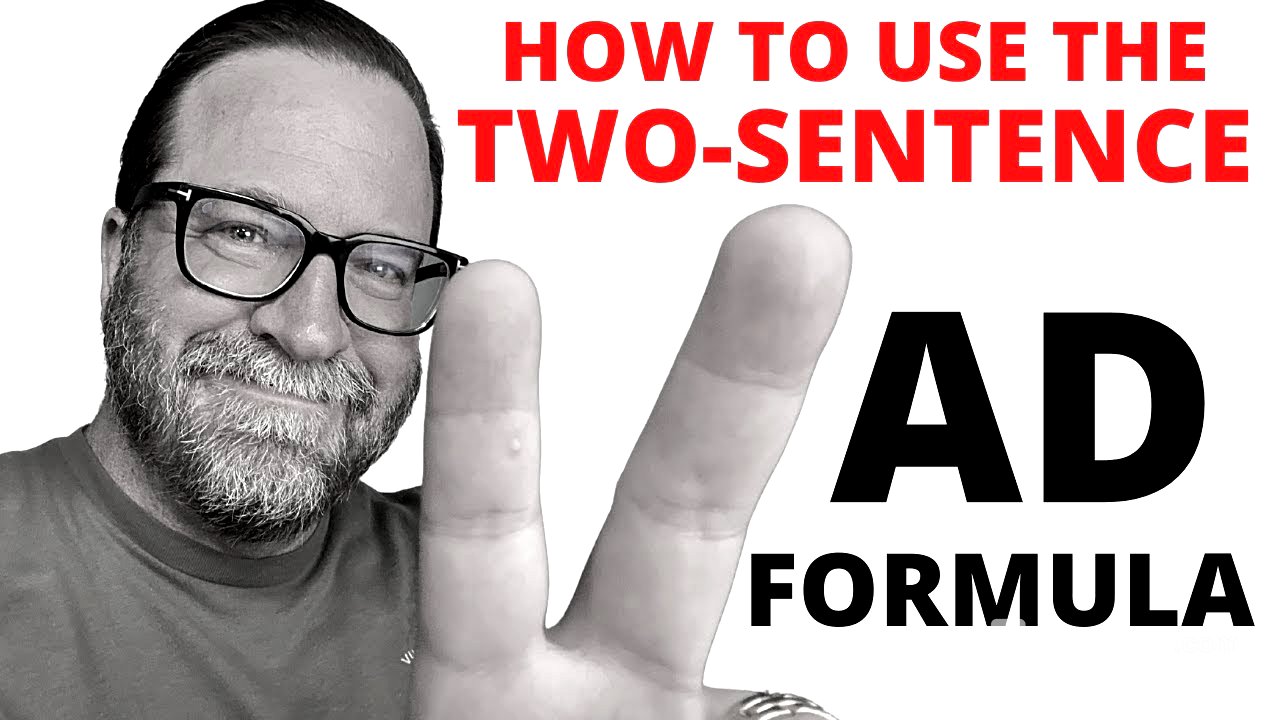TLDR;
This video by Frank Kern introduces a simple yet effective two-sentence ad structure for social media, emphasizing its ability to target ideal prospects and train Facebook's algorithm for better ad performance. The key is using "dog whistle copy" to attract the right audience and leveraging automation tools to track ad revenue, provide feedback to Facebook, and scale successful ads while cutting losses on underperforming ones.
- Two-sentence ad copy can be highly effective for social media.
- The key is to use "dog whistle copy" that attracts ideal prospects.
- Automation tools are essential for tracking ad performance and training Facebook's algorithm.
Introduction: The Magic Two-Sentence Ad Structure [0:00]
Frank Kern introduces a method for running effective social media ads using just two sentences of ad copy. He stumbled upon this strategy by accident, inspired by a book titled "Read This If You Want to Take Great Photographs." This title exemplifies "dog whistle copy," which is designed to attract only the ideal prospects while being ignored by others. Kern applied this principle to advertising, creating ads that directly speak to the target audience.
The "Dog Whistle Copy" Concept [1:31]
Dog whistle copy is defined as copy that resonates with ideal prospects while being ignored by others. The concept is derived from dog whistles, which emit a frequency audible only to dogs. Kern realized the power of this approach after seeing the book title "Read This If You Want to Take Great Photographs." He decided to test this concept in his advertising, leading to surprisingly effective results.
Testing the Two-Sentence Ad Structure [2:41]
Kern began testing ads with a picture and a headline like "Read this if you want to make your social media ads work better," followed by a bottom line such as "New PDF reveals how to make ads work better." These ads performed well for lead generation. He then tested ads aimed at direct sales, using two sentences like "Get four complete courses from Frank Kern for just four dollars," accompanied by a picture of the courses. Despite seeming too straightforward, these ads also proved surprisingly effective.
The Three Essential Elements for Ad Success [4:33]
To effectively use the two-sentence ad strategy, three key elements are needed: accurate revenue tracking for each ad, the ability to inform Facebook which ads are generating revenue, and automated signals to guide Facebook's algorithm. Kern promotes his software, ROAS.org, as a tool that provides these capabilities, allowing users to track revenue, provide feedback to Facebook, and automate scaling and optimization.
Real-World Examples and Automation [6:43]
Kern shares a live campaign example where he spent $390 and generated $979 in revenue. He uses ROAS.org to automatically increase the budget of profitable ads by 5% every six hours, up to 20% per day. The system also turns off campaigns that spend $20 without acquiring customers. For campaigns that are not profitable but still generating customers, the system automatically reduces the daily spend by 5% to optimize performance.
The Two-Sentence Copy Framework Explained [10:15]
The two-sentence copy framework consists of a primary text (above the picture) that says, "Read this if you want [big result]," and a secondary text (below the picture) that says, "[Thing] helps you get [result]." For example, an ad for a calculator could say, "Awesome calculator for three dollars" above the picture and "Get this amazing calculator for three dollars" below it. This simplicity is key to attracting the right audience.
How the Two-Sentence Ad Works with Facebook's Algorithm [11:35]
When you run an ad on Facebook, the platform shows it to a small pocket of people within your chosen audience. If the ad is highly targeted and uses clear messaging (like the calculator example), people who click, engage, or watch a video are signaling to Facebook's algorithm that they are the ideal profile. Facebook then starts finding more people like them within the larger audience.
Training the Pixel and Sending Signals [14:39]
Facebook tracks user behavior on your website, including time spent on pages and purchases made. By passing this data back to Facebook, you train the pixel and improve the algorithm's ability to find the right audience. Sending signals, such as increasing budgets for successful ads and decreasing budgets for underperforming ones, further refines the algorithm's targeting.
Scaling and Protecting Against Loss [17:29]
When an ad set is performing well (e.g., a 2x return on ad spend), automate budget increases to signal to Facebook to find more of the same type of people. If performance dips below a certain threshold (e.g., 1.9x), automate budget decreases to prompt Facebook to explore other segments of the audience. To protect against losses, set a maximum cost per customer (e.g., $15) and pause ad sets that exceed this cost over a seven-day period.
Final Thoughts and Call to Action [22:44]
Kern reiterates that the two-sentence copy strategy is effective because it trains Facebook's machine learning to find the right people. He encourages viewers to try ROAS.org to automate their ad campaigns and accurately track results. Regardless of whether they use his software, he hopes viewers recognize the power of this simple yet logical approach to social media advertising.
